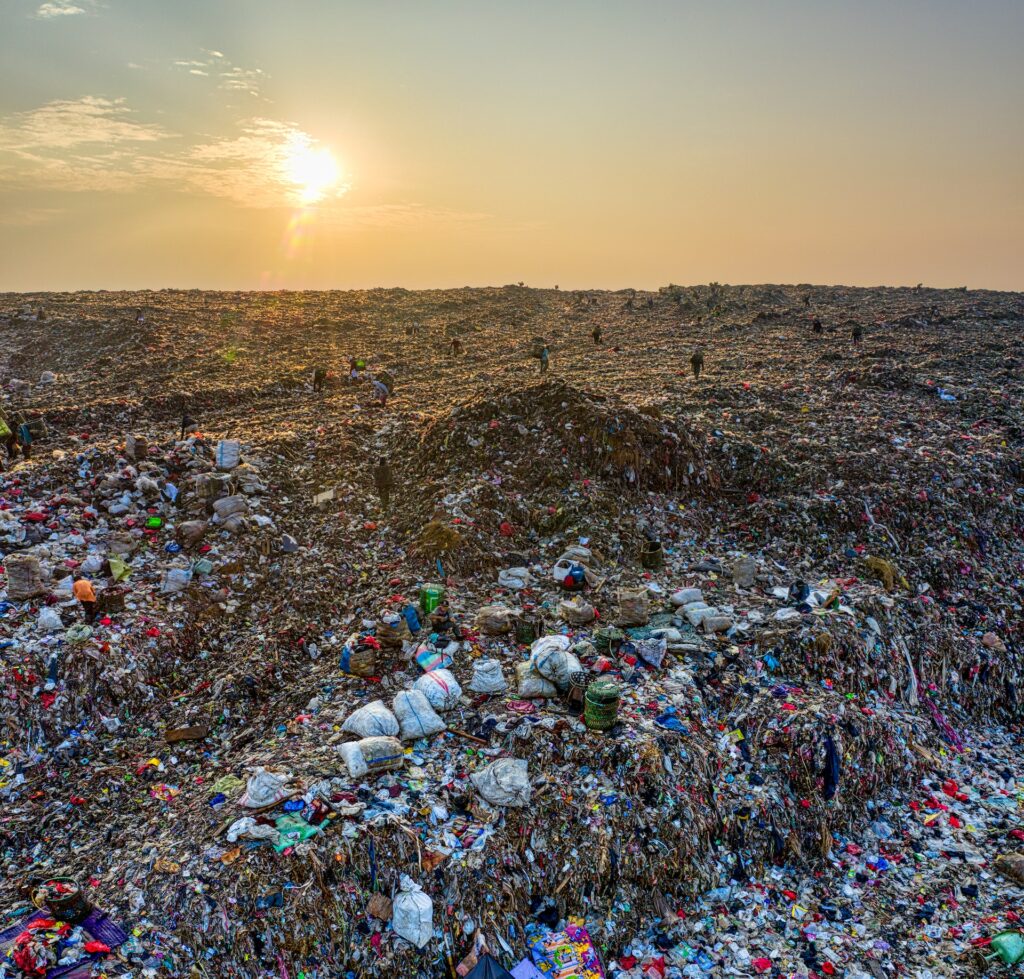College students are broke. Fast fashion is cheap. What seems like a perfect match has created a growing problem for landfills all around the country. Now more than ever, choosing sustainable clothing is crucial to saving Earth’s landfills.
Fast fashion is a growing term used to describe the cycle of “microtrends” – fleeting fads that don’t stay in style for long – and how fashion retailers produce cheap and unsustainable clothing in an attempt to serve these microtrends. This poorly made clothing is not being made to last, and millions of pounds of textiles are thrown away yearly.

According to Rachel Brown in her article on Roadrunner, clothing in landfills can take up to 200 years to decompose. During decomposition, dyes, greenhouse gasses, and chemicals from the clothes pollute groundwater and soil. Fast fashion has such a negative effect on the environment, yet consumers just can’t seem to stay away from it.
“Our bodies are changing, our way of life is changing, our incomes are changing. Unfortunately [fast fashion] is something that a lot of people have to resort to,” OU Sustainability chair Rylee Houston said concerning reasons that would cause one to shop unethically.
Not everyone has the financial means to purchase new, trendy clothing whenever they can. For some, fast fashion is all they can afford. College students in particular purchase a lot of cheap, unsustainable clothing, so they can be stylish without spending their whole paycheck on one outfit. Still, there are many alternatives to fast fashion that can be more sustainable – and even cheaper. Thrifting and borrowing clothes are alternate ways to expand a wardrobe on a budget. Houston said if one does have to shop unethically, it is important to buy staple pieces that can get more than one use and to take good care of clothes so they can last as long as possible.
Leading brands such as SHEIN, Fashion Nova, ZARA, H&M, and ROMWE are some of the fast fashion giants that have emerged over recent years. With many of these businesses, the only way to sell clothes at such low prices is to use underpaid labor – often children. This past summer, videos on TikTok went viral after some SHEIN shoppers began exposing the company for mistreating their workers. Some videos even showed SHEIN packages with notes inside asking for help. Many college students are unaware of this side of fast fashion. Aaron Gilson-Bond, a member of the OU Sustainability Committee, believes it is important to educate others on what is happening on the other side of the world in hopes that the knowledge would inspire his peers to shop more sustainably.
“Countries producing all these clothes have poor air quality,” Bond said. “From an emissions standpoint, factories are constantly producing all this clothing, which leads to health concerns from the pollution.”
Grace Ganz in Borgen Magazine wrote that China, Bangladesh, Vietnam, and Indonesia account for the majority of the world’s fast fashion supply. In terms of most polluted countries as of 2021, these countries rank 22nd, 1st, 36th, and 17th, respectively.
Fast fashion exploits cheap labor to make clothes destined to end up in a landfill. College students shopping sustainably can lead to a positive environmental change that prevents clothing from being thrown away after only a few uses. Future generations will be at risk if fast fashion continues to have such a hold on consumers. Microtrends will come and go, but the environment is not as fleeting.